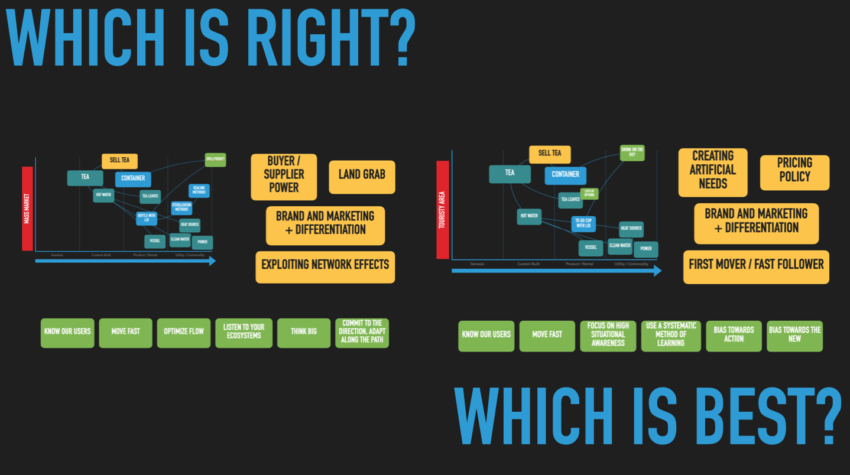A talk from the November 2022 AgileRTP meetup covering product development with Wardley Mapping.
And if you’d prefer, you can download a PDF of the slides.
Key links from the video:
- My free Wardley Map videos and resources
- Simon’s Book
- The Wardley Map wiki
- The Wardley Map Community Hub
- Ben Mosior’s Courses
- Info on hiring me to help your organization!
This video is a rerecord of a presentation I gave at AgileRTP in November 2022 on Navigating Product Development with Wardley Mapping. I also tweeted a summary of a portion of the talk which you can find below (or read the original thread on Twitter
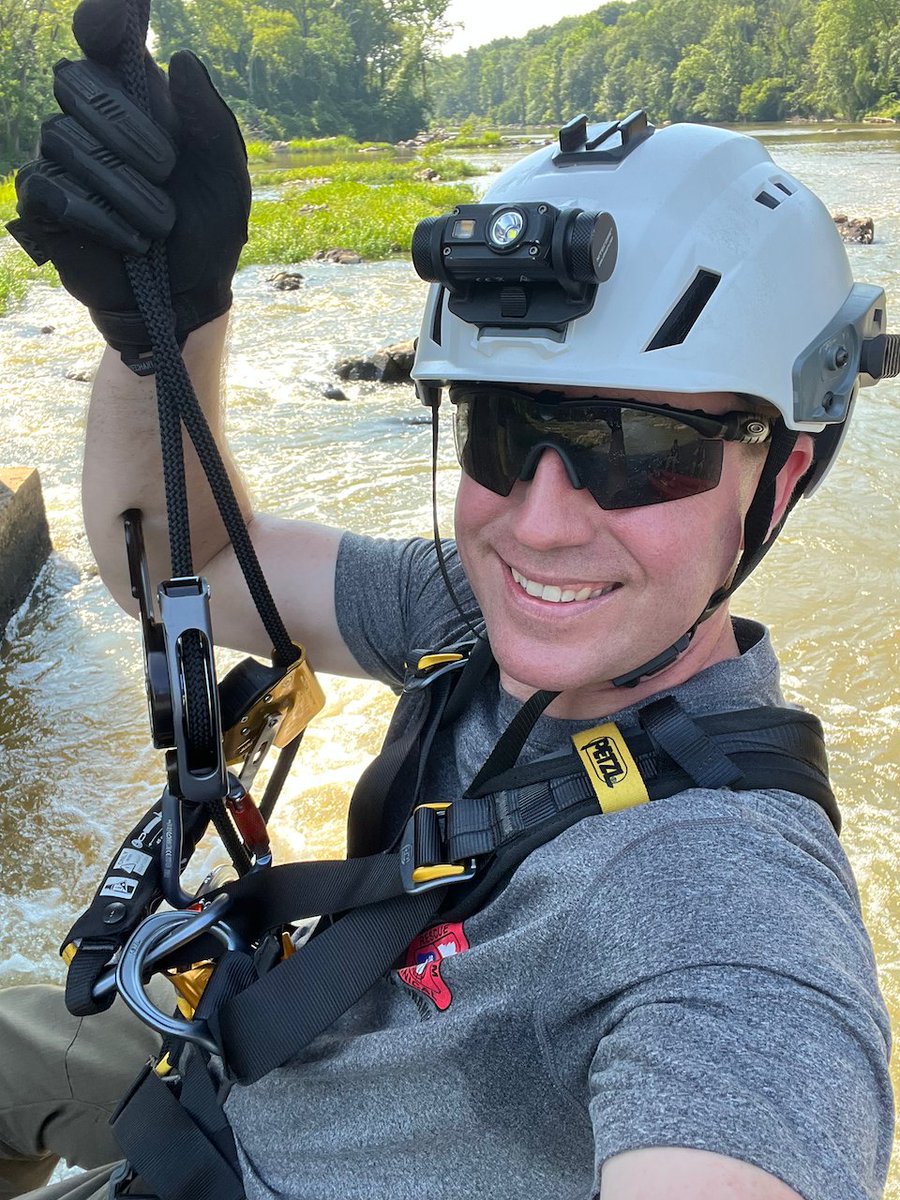
As many of you know, in addition to helping organizations, I also am a Captain of a Technical Rescue team. Part of our response capabilities include wilderness search for lost people.
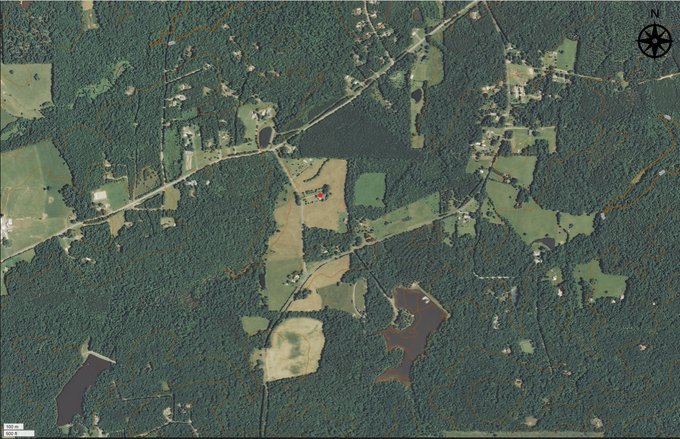
Oftentimes we get called out with very little information – basically a map like this that shows where the person was last seen…and that’s it. So how do we develop a response strategy with so little to go on?
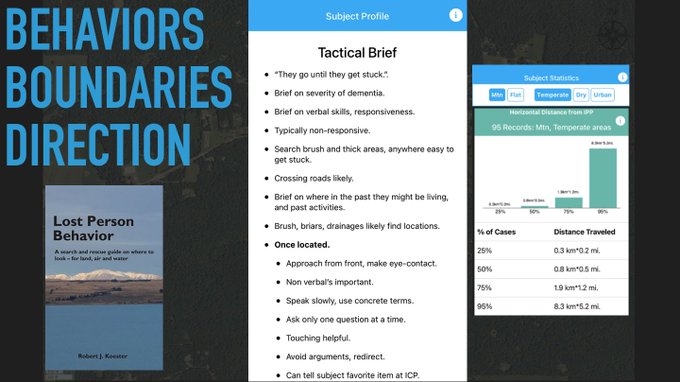
Because though the landscape is near infinite, we can bring some key information: Behaviors, Boundaries and Direction. In the Search World we have a book documenting searches that help us know the patterns of different subject profiles – here seen for a dementia patient
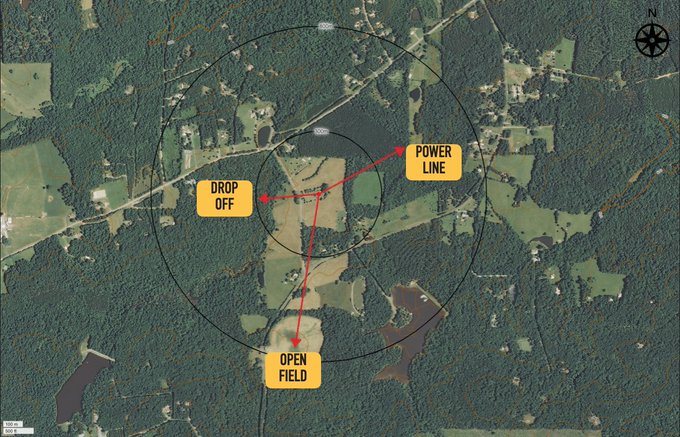
This information allows us to draw boundaries – in this case the rings – as well as directions (dementia patients tend to walk in a straight line until they get stuck, so here I’m drawing lines as if it’s from the doors of their house)
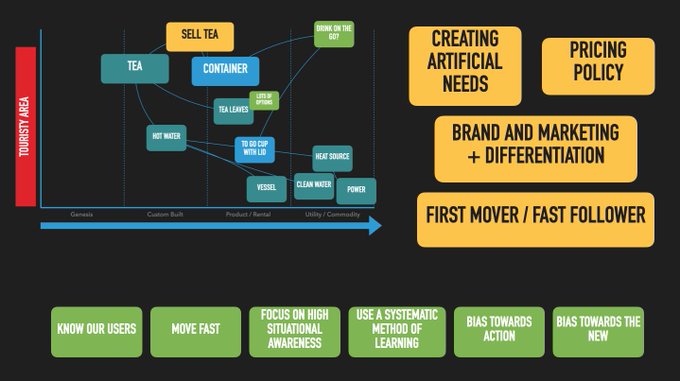
These give us potential strategies, but we also have to look at our team capabilities (doctrine) to ensure we can execute those strategies. For example, the western most line involves high angle rope work, so if we don’t have that capability, we need to call in other people

Similarly, if we’re evaluating a business opportunity on a map, we have to look at the components of the maps, the strategies or gameplays we need to execute to be successful, and the doctrine we need to have strengths in to be successful in this context.
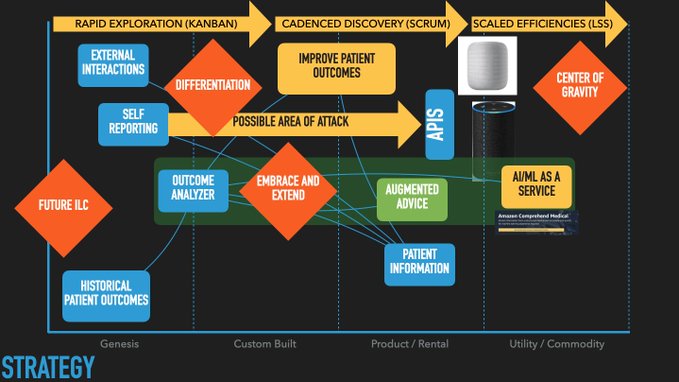
We can also see what types of development approaches we’ll need. For example, if we’re relying on evolving “Outcome Analyzer” as a gameplay, we’ll need teams executing in very tight exploration loops, whereas operationalizing an API requires more careful approaches for stability
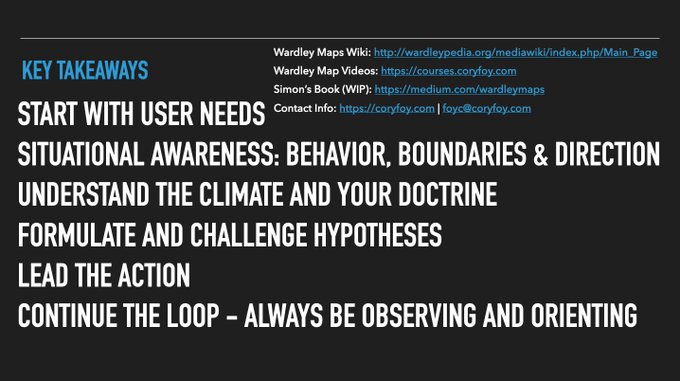
So start with User Needs, bring in Behaviors, Boundaries and Direction, understand the Climate and your Doctrine, Formulate and use maps to challenge hypothesis, lead that action, and then stay in the OODA loop – observing, orienting, deciding and acting.
